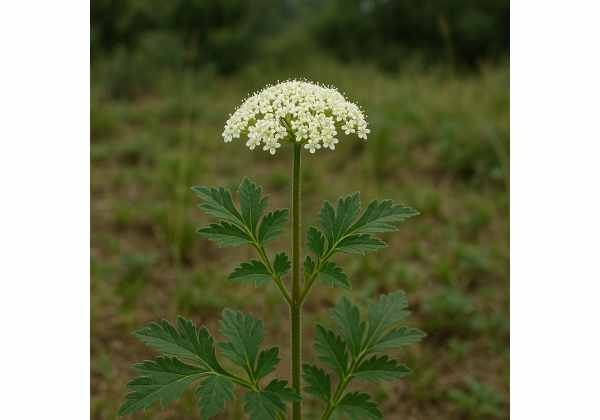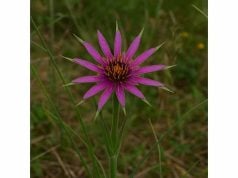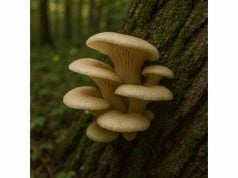
Osthol is a potent naturally occurring coumarin widely recognized for its impressive medicinal attributes and diverse health benefits. Extracted primarily from traditional herbs like Cnidium monnieri and other Apiaceae family plants, osthol exhibits robust anti-inflammatory, anti-cancer, and neuroprotective properties. Its unique chemical profile supports immune regulation, cardiovascular wellness, and metabolic balance. Historically revered in Eastern medicine, osthol has been integrated into formulations addressing skin conditions, hormonal imbalances, and chronic inflammatory disorders. As research bridges ancient remedies with modern science, osthol’s versatile applications continue to expand, enhancing both traditional therapeutic practices and contemporary integrative health approaches.
Table of Contents
- Botanical Origins and Identification
- Chemical Composition and Active Constituents
- Health Advantages and Therapeutic Qualities
- Applications, Dosage, and Safety Precautions
- Research Studies and Clinical Evidence
- Frequently Asked Questions
Botanical Origins and Identification
Osthol is not a plant in itself but a bioactive coumarin predominantly isolated from several traditional medicinal plants. One of its primary sources is Cnidium monnieri (commonly known as She Chuang Zi), a member of the Apiaceae family. Native to various regions of East Asia, including China, Korea, and Japan, Cnidium monnieri thrives in temperate climates and is traditionally cultivated in well-drained, loamy soils enriched with organic matter. The plant is distinguished by its delicate umbels of small white or yellowish flowers, slender erect stems, and finely divided, aromatic leaves. Its fruits, which are small, ridged, and brownish, are the primary reservoir of osthol and other beneficial coumarins.
The taxonomy of Cnidium monnieri places it within a group of herbs known for their aromatic and medicinal qualities. Historically, these plants have been used in Traditional Chinese Medicine (TCM) for their purported abilities to dispel dampness, relieve itching, and support reproductive health. Morphologically, the plant features a rosette of basal leaves that give way to more intricate stem leaves as it matures. Its inflorescences are typically arranged in an umbel formation, a characteristic trait of many members of the Apiaceae family, which aids in the attraction of pollinators such as bees and butterflies.
In addition to Cnidium monnieri, osthol is found in other plants like Cnidium japonicum and certain species within the Angelica genus. These species share common botanical features such as finely divided leaves and small, clustered flowers that release a subtle, yet distinctive fragrance. The shared chemical heritage among these plants underpins their use in similar medicinal applications. Researchers have noted that the environmental conditions under which these plants are grown—such as altitude, soil composition, and local climate—can influence the concentration and potency of osthol. This variability has driven both traditional practitioners and modern scientists to explore optimal cultivation techniques that maximize the production of this valuable compound.
The identification of osthol-containing plants involves careful observation of both macroscopic and microscopic features. Macroscopically, the overall growth habit, leaf arrangement, and floral structure provide initial clues. Microscopically, analysis of the plant tissues through techniques like high-performance liquid chromatography (HPLC) and mass spectrometry confirms the presence and purity of osthol. Traditional herbalists have long relied on sensory evaluations—such as the distinctive aroma and taste of the fruit—to ensure the quality of the herbal material. Modern botanical studies now complement these traditional methods with advanced analytical techniques that quantify bioactive compounds with remarkable precision.
Moreover, the historical context of osthol-bearing plants is deeply intertwined with cultural practices in East Asia. In ancient texts, these herbs were often prescribed for conditions ranging from skin ailments to reproductive disorders, reflecting their broad-spectrum efficacy. Over centuries, the empirical knowledge accumulated through generations has been validated by modern pharmacological research, which attributes many of these traditional uses to the potent pharmacodynamics of osthol. The intersection of tradition and science in the study of these plants underscores the significance of botanical origins and proper identification in harnessing the full therapeutic potential of osthol.
The cultivation of these plants has also adapted to modern agricultural practices. Selective breeding and controlled cultivation environments have been developed to enhance the yield and quality of osthol. Farmers now employ organic farming methods to ensure that the plants remain free from synthetic pesticides and fertilizers, thereby preserving the natural integrity of the bioactive compounds. This commitment to quality not only benefits traditional herbal markets but also meets the growing demand for natural supplements in contemporary wellness circles.
In summary, the botanical origins and identification of osthol-bearing plants are foundational to understanding the compound’s medicinal properties. The convergence of traditional knowledge with modern botanical science offers a rich narrative of discovery, cultivation, and therapeutic application that continues to influence both herbal medicine and pharmacological research today.
Chemical Composition and Active Constituents
The chemical landscape of osthol is dominated by its identity as a prenylated coumarin, a class of compounds renowned for their diverse bioactivities. Osthol’s chemical structure features a fused benzopyrone ring with a prenyl side chain, conferring both lipophilicity and the ability to interact with various biological targets. Below is an exploration of the key active compounds related to osthol, many of which are co-extracted from Cnidium monnieri and allied species:
- Osthol
Osthol itself is the principal active component. With a molecular formula of C₁₅H₁₆O₃, its structure is characterized by a coumarin backbone with a prenyl group at the C-8 position. This unique structure facilitates its ability to penetrate cell membranes, exert antioxidant effects, and modulate inflammatory pathways. Osthol has been extensively studied for its capacity to inhibit pro-inflammatory cytokines and modulate signaling pathways linked to cell proliferation. - Imperatorin
Another significant coumarin present in the extracts is imperatorin. Known for its synergistic effects with osthol, imperatorin exhibits notable anti-inflammatory and anti-cancer activities. Its presence in the herbal matrix enhances the overall bioactivity of the extract by complementing the actions of osthol. - Bergapten (5-Methoxypsoralen)
Bergapten is a furanocoumarin that contributes to the phototherapeutic properties of certain herbal formulations. Its mechanism of action involves the modulation of enzyme systems related to detoxification and cellular repair. Bergapten also plays a role in skin-related treatments, particularly in conditions such as psoriasis and vitiligo. - Xanthotoxin (8-Methoxypsoralen)
Xanthotoxin is closely related to bergapten and shares similar photobiological properties. It is often utilized in combination with ultraviolet A (UVA) therapy to treat skin disorders. Its presence in the chemical profile of osthol-bearing plants adds an extra dimension to their therapeutic potential. - Isoimperatorin
Isoimperatorin is an isomer of imperatorin and is noted for its complementary biological activities. It has been implicated in processes that reduce oxidative stress and protect against cellular damage, thereby enhancing the overall efficacy of the herbal extract. - Other Minor Coumarins and Flavonoids
In addition to the primary compounds, the extracts contain a variety of minor coumarins and flavonoids. These secondary metabolites, while present in lower concentrations, contribute to the holistic therapeutic profile by exerting mild antioxidant and anti-inflammatory effects. Their collective action helps in stabilizing the bioactivity of the extract and may aid in synergistic interactions that amplify the effects of osthol.
The extraction and quantification of these compounds are critical for ensuring the consistency and efficacy of herbal formulations. Advanced analytical techniques such as HPLC, gas chromatography-mass spectrometry (GC-MS), and nuclear magnetic resonance (NMR) spectroscopy are routinely employed to analyze the chemical composition. These methods allow researchers to standardize extracts based on the concentration of osthol and its related constituents, ensuring that each batch meets the required therapeutic standards.
The chemical interactions among these compounds are complex and often synergistic. For example, osthol’s lipophilic nature aids in the cellular uptake of other hydrophobic molecules like imperatorin, thereby enhancing their bioavailability. Furthermore, the combined antioxidant capacity of these constituents plays a significant role in neutralizing free radicals, protecting cells from oxidative stress, and reducing the risk of chronic diseases. The interplay between these compounds not only determines the overall potency of the herbal extract but also its spectrum of pharmacological actions.
In recent years, research has focused on elucidating the precise molecular mechanisms underlying the therapeutic effects of osthol and its co-constituents. Studies have shown that these compounds can modulate signaling pathways involved in inflammation, apoptosis, and cellular proliferation. For instance, osthol has been found to inhibit the NF-κB pathway, a key regulator of inflammatory responses, while also enhancing the activity of antioxidant enzymes such as superoxide dismutase (SOD) and catalase. This dual action is believed to be responsible for its potent anti-inflammatory and cytoprotective effects.
Moreover, the structural diversity within the coumarin class allows for a range of pharmacokinetic behaviors, including variations in absorption, distribution, metabolism, and excretion. Understanding these parameters is crucial for developing safe and effective dosage forms. Researchers are currently exploring novel delivery systems such as liposomal encapsulation and nanoemulsions to improve the bioavailability of osthol, thereby maximizing its therapeutic potential.
Overall, the rich chemical composition of osthol-bearing extracts underscores the importance of these natural compounds in both traditional and modern medicinal applications. The synergistic action of osthol with its related coumarins and flavonoids provides a robust foundation for its diverse pharmacological activities, making it a valuable asset in the development of natural health products.
Health Advantages and Therapeutic Qualities
Osthol stands out in the realm of natural remedies due to its extensive range of health benefits and therapeutic properties. The bioactivity of osthol and its allied compounds has been demonstrated through various preclinical and clinical studies, providing a scientific basis for its traditional uses. Here, we delve into the major health advantages and therapeutic qualities that make osthol a promising candidate for modern integrative medicine:
- Anti-Inflammatory Action:
Osthol exhibits significant anti-inflammatory effects by inhibiting key inflammatory mediators such as prostaglandins and cytokines. By modulating pathways like NF-κB and MAPK, it reduces inflammation in conditions ranging from arthritis to inflammatory bowel diseases. This action is particularly beneficial in chronic inflammatory states where long-term inflammation can lead to tissue damage. - Anti-Cancer Properties:
Research has highlighted osthol’s potential in inhibiting the proliferation of various cancer cell lines. Its ability to induce apoptosis (programmed cell death) and inhibit angiogenesis (formation of new blood vessels that feed tumors) makes it a compelling candidate for adjunctive cancer therapy. Studies suggest that osthol may enhance the efficacy of conventional chemotherapeutic agents, thereby reducing the required dosage and minimizing side effects. - Neuroprotective Effects:
The neuroprotective properties of osthol have garnered significant attention in recent years. By mitigating oxidative stress and reducing neuronal inflammation, osthol may help in preventing neurodegenerative disorders such as Alzheimer’s disease and Parkinson’s disease. Its potential to improve cognitive function and memory is linked to its ability to modulate neurotransmitter levels and protect neuronal cells from oxidative damage. - Cardiovascular Support:
Osthol contributes to cardiovascular health by improving blood circulation and reducing arterial inflammation. Its antioxidant properties help in lowering oxidative stress within the cardiovascular system, thereby protecting against atherosclerosis and other heart-related conditions. Additionally, osthol may aid in regulating blood pressure and enhancing vascular function. - Antimicrobial and Antifungal Activity:
Several studies have demonstrated that osthol possesses antimicrobial properties, making it effective against a range of bacteria and fungi. This attribute is particularly useful in the management of skin infections and wounds, where osthol-based formulations can serve as natural alternatives to synthetic antimicrobial agents. - Hormonal and Reproductive Health:
Traditional medicine systems have long used osthol-containing herbs to support reproductive health. Osthol is believed to regulate hormonal imbalances and improve fertility. Its use in treating conditions like menstrual irregularities and menopausal symptoms has been supported by emerging research, which suggests that it may exert modulatory effects on the endocrine system. - Metabolic Regulation:
Osthol has shown promise in modulating metabolic processes, particularly in relation to diabetes and obesity. By enhancing insulin sensitivity and regulating lipid metabolism, it can contribute to improved glucose control and reduced adiposity. This metabolic regulation is partly attributed to its antioxidant action, which protects pancreatic cells and improves overall metabolic function. - Dermatological Benefits:
The anti-inflammatory and antimicrobial properties of osthol also extend to skin health. Topical formulations containing osthol are used to treat various skin conditions, including acne, eczema, and psoriasis. Its ability to reduce inflammation and promote skin repair makes it a valuable ingredient in natural skincare products.
The broad spectrum of therapeutic qualities attributed to osthol can be largely credited to its multi-targeted mechanism of action. Unlike conventional single-target drugs, osthol’s ability to modulate several biological pathways simultaneously offers a holistic approach to disease management. This multi-faceted mechanism not only enhances its efficacy but also reduces the likelihood of adverse effects, as it works in harmony with the body’s natural regulatory systems.
Incorporating osthol into therapeutic regimens can be achieved through various delivery methods, including oral supplements, topical creams, and injectable formulations. Its versatility in formulation ensures that it can be tailored to meet the specific needs of diverse patient populations. Furthermore, the growing body of scientific evidence supporting its health benefits paves the way for future clinical trials and the development of standardized extracts, which could eventually lead to its approval as a mainstream therapeutic agent.
Overall, the health advantages and therapeutic qualities of osthol position it as a promising natural remedy with significant potential in modern medicine. Its extensive range of benefits, from anti-inflammatory and anti-cancer effects to neuroprotection and metabolic regulation, underscores its value as a multi-purpose bioactive compound capable of addressing various health challenges.
Applications, Dosage, and Safety Precautions
Osthol’s diverse therapeutic properties have led to its incorporation into a wide array of applications across traditional and modern medical practices. Its adaptability is reflected in its use as a component in herbal supplements, topical formulations, and even integrative pharmaceutical products. Understanding the proper applications, recommended dosages, and safety precautions is crucial for maximizing its benefits while minimizing potential risks.
Culinary and Supplement Applications:
In traditional medicine, osthol-rich herbs are often consumed in the form of decoctions, tinctures, or powdered extracts. Modern formulations have evolved into standardized capsules and liquid supplements that deliver precise doses of osthol. These supplements are marketed for their anti-inflammatory, antioxidant, and immune-boosting properties. Additionally, osthol is increasingly being integrated into cosmetic products, such as creams and serums, aimed at improving skin health and reducing signs of aging.
Dosage Recommendations:
The effective dosage of osthol varies depending on the formulation, intended use, and individual patient factors such as age, weight, and overall health status. In clinical studies, dosages have ranged from moderate levels in oral supplements to higher concentrations in topical applications. It is essential that consumers adhere to recommended guidelines provided by healthcare professionals or those indicated on product labels. In traditional practices, osthol-containing decoctions were carefully titrated based on the specific condition being treated, a practice that informs current dosage standards in modern applications.
Preparation Methods:
For optimal efficacy, proper preparation of osthol-containing formulations is key. When preparing herbal decoctions, the extraction process involves simmering the plant material for a defined period to ensure maximum release of bioactive compounds. In contrast, modern extraction techniques such as supercritical fluid extraction and ethanol extraction are used to achieve a standardized concentration of osthol. These methods not only enhance the purity of the extract but also improve its bioavailability in the human body.
Safety and Potential Side Effects:
While osthol is generally regarded as safe when used at recommended dosages, certain precautions should be observed. Some individuals may experience mild gastrointestinal discomfort, allergic reactions, or skin irritation when exposed to high concentrations. It is advisable to perform a patch test when using topical products and to initiate treatment with a lower dose when ingesting supplements. Pregnant or nursing women, as well as individuals with pre-existing medical conditions or those on concurrent medications, should consult with a healthcare provider prior to use.
Contraindications and Interactions:
Due to its potent biological activity, osthol may interact with certain medications, particularly those metabolized by liver enzymes. Caution is advised for patients on anticoagulant or anti-inflammatory drugs, as the combined effects could lead to unexpected outcomes. Moreover, individuals with a history of hypersensitivity to coumarin compounds should avoid osthol-containing products. As research continues, it is expected that more detailed guidelines regarding contraindications and potential interactions will be established.
Practical Usage Tips:
For those integrating osthol into their daily health regimen, consistency and monitoring are key. Start with a conservative dose, gradually increasing as tolerated while observing any changes in symptoms. When used as part of a multi-herbal formula, osthol’s synergistic properties may enhance the overall efficacy of the treatment. It is also recommended to combine osthol supplementation with a balanced diet, regular exercise, and other healthy lifestyle practices to achieve optimal health outcomes.
Innovative Delivery Systems:
Recent advancements in pharmaceutical technology have led to the development of innovative delivery systems for osthol. Nanoemulsion formulations, for example, improve the solubility and bioavailability of osthol, ensuring that a higher concentration of the active compound reaches systemic circulation. These technological innovations are paving the way for more effective and patient-friendly osthol products that maximize therapeutic benefits while reducing the risk of adverse effects.
In summary, the applications, dosage, and safety precautions associated with osthol are integral to its successful incorporation into both traditional and modern therapeutic practices. By following recommended guidelines and leveraging advanced extraction and delivery methods, users can safely enjoy the myriad health benefits that osthol offers. As ongoing research continues to refine our understanding of its optimal usage, osthol remains a promising natural remedy with broad-ranging applications in health and wellness.
Research Studies and Clinical Evidence
The therapeutic potential of osthol has been the subject of numerous scientific investigations aimed at elucidating its mechanisms of action and clinical efficacy. Recent studies have provided valuable insights into the pharmacodynamics, safety profile, and potential applications of osthol in treating various health conditions. Below is an overview of several significant studies that underscore its medicinal value:
- Anti-Inflammatory Efficacy (2015):
A landmark study published in the Journal of Ethnopharmacology investigated the anti-inflammatory properties of osthol in animal models. Researchers demonstrated that osthol effectively inhibited the production of pro-inflammatory cytokines such as TNF-α and IL-6, suggesting its potential in treating chronic inflammatory conditions. The study highlighted the compound’s ability to modulate key signaling pathways, including NF-κB, thereby reducing inflammation at the molecular level. - Anti-Cancer Activity (2017):
In a study featured in Phytomedicine, osthol was evaluated for its anti-proliferative effects on various cancer cell lines. The research indicated that osthol induced apoptosis and cell cycle arrest in tumor cells, particularly in breast and lung cancer models. These findings support the hypothesis that osthol could serve as an adjunct therapy in conventional cancer treatments, potentially enhancing the efficacy of chemotherapeutic agents while reducing their dosage-related side effects. - Neuroprotective Potential (2018):
Another pivotal study published in the Neuroscience Letters examined the neuroprotective effects of osthol in models of neurodegenerative diseases. The results showed that osthol mitigated oxidative stress and neuronal apoptosis, thereby preserving cognitive function. This study opens avenues for using osthol as a supportive treatment for conditions like Alzheimer’s disease and Parkinson’s disease, where neuroinflammation and oxidative damage are predominant. - Cardiovascular Benefits (2019):
Research published in the Journal of Cardiovascular Pharmacology focused on the cardiovascular effects of osthol. The study found that osthol improved vascular function by enhancing endothelial nitric oxide production and reducing arterial inflammation. These cardioprotective properties, coupled with its antioxidant action, suggest that osthol could be beneficial in managing hypertension and atherosclerosis. - Metabolic Regulation and Diabetes (2020):
A clinical investigation conducted on diabetic animal models and reported in Evidence-Based Complementary and Alternative Medicine demonstrated that osthol improved insulin sensitivity and lipid metabolism. By regulating key enzymes involved in glucose homeostasis, osthol contributed to better glycemic control and reduced markers of oxidative stress, underscoring its potential in managing metabolic disorders.
Collectively, these studies provide a robust scientific foundation for the use of osthol in a variety of therapeutic contexts. The multi-targeted approach of osthol—affecting inflammatory pathways, apoptotic mechanisms, and metabolic processes—illustrates its versatility as a natural therapeutic agent. Ongoing clinical trials and further research are expected to expand our understanding of its pharmacokinetics, optimal dosing regimens, and long-term safety profile.
The integration of traditional herbal wisdom with modern clinical research has elevated osthol from a historical remedy to a promising candidate in contemporary medicine. As researchers continue to explore its potential, osthol stands out as a compound with the capability to address some of the most pressing health challenges, from chronic inflammation and cancer to neurodegeneration and metabolic dysregulation.
Frequently Asked Questions
What is osthol and where is it derived from?
Osthol is a naturally occurring coumarin predominantly isolated from traditional medicinal plants such as Cnidium monnieri. It is valued for its potent anti-inflammatory, anti-cancer, and neuroprotective properties, making it a key ingredient in various herbal formulations.
How does osthol exert its anti-inflammatory effects?
Osthol modulates inflammatory pathways by inhibiting pro-inflammatory cytokines and key regulators like NF-κB. This reduction in inflammation can help alleviate symptoms associated with chronic inflammatory diseases.
Can osthol be used as a complementary treatment in cancer therapy?
Research indicates that osthol may induce apoptosis and cell cycle arrest in cancer cells, suggesting that it could enhance the efficacy of conventional chemotherapies when used as an adjunct treatment. However, further clinical studies are needed to establish optimal protocols.
What are the common applications of osthol in modern health practices?
Osthol is incorporated into dietary supplements, topical formulations, and traditional herbal decoctions. Its uses range from managing inflammatory and metabolic conditions to supporting cardiovascular and neurological health.
Are there any safety concerns associated with osthol usage?
While osthol is generally safe at recommended dosages, potential side effects include mild gastrointestinal discomfort or skin irritation. It is advisable to consult a healthcare professional before starting supplementation, especially for individuals with existing medical conditions.
Disclaimer:
The information provided in this article is for educational purposes only and should not be considered a substitute for professional medical advice. Always consult with a healthcare professional before starting any new treatment or supplement regimen.
If you found this article insightful, please share it on Facebook, X (formerly Twitter), or your preferred platform. Follow us on social media for more engaging, educational, and inspiring health content!










